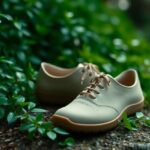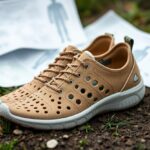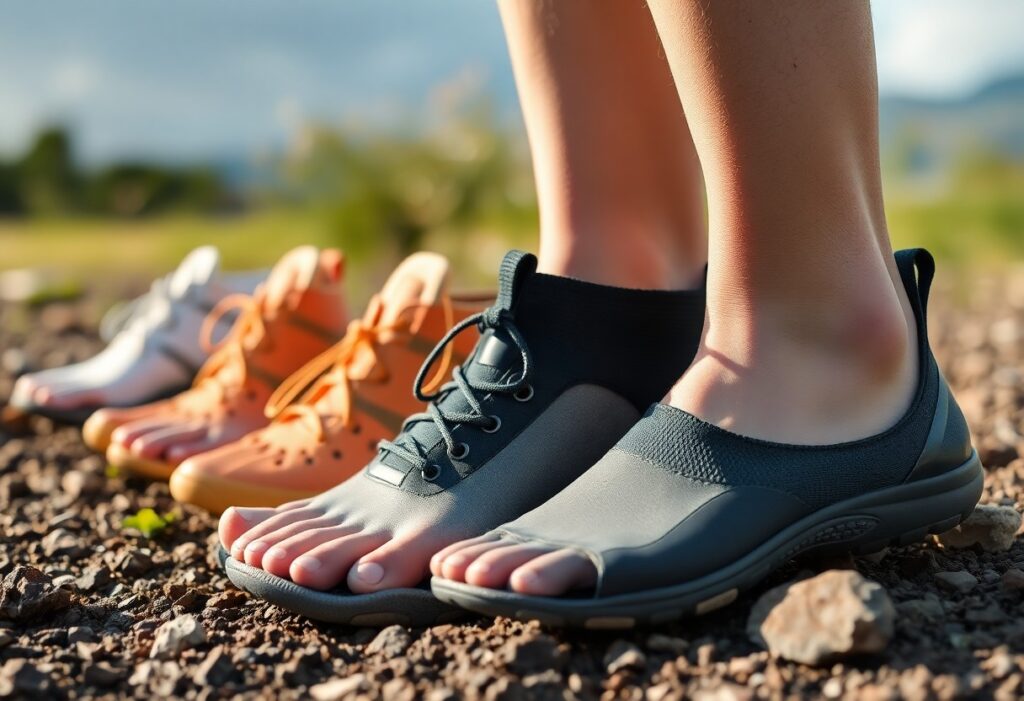
The field of barefoot footwear has undergone significant evolution, driven by groundbreaking developments in material engineering. These advancements offer remarkable comfort and performance improvements for users. This exploration delves into how innovative technologies are revolutionising shoe design, particularly with Vibram soles leading the charge. These soles not only provide an exceptional ground feel but also ensure robust protection for the foot. As you navigate through this content, you will discover sustainable manufacturing methods that significantly mitigate environmental impact, while also improving the durability and functionality of barefoot shoes. The integration of biomechanics, advanced materials, and eco-conscious production techniques is transforming the minimalist footwear sector, setting the stage for a future where comfort, performance, and sustainability coexist seamlessly.
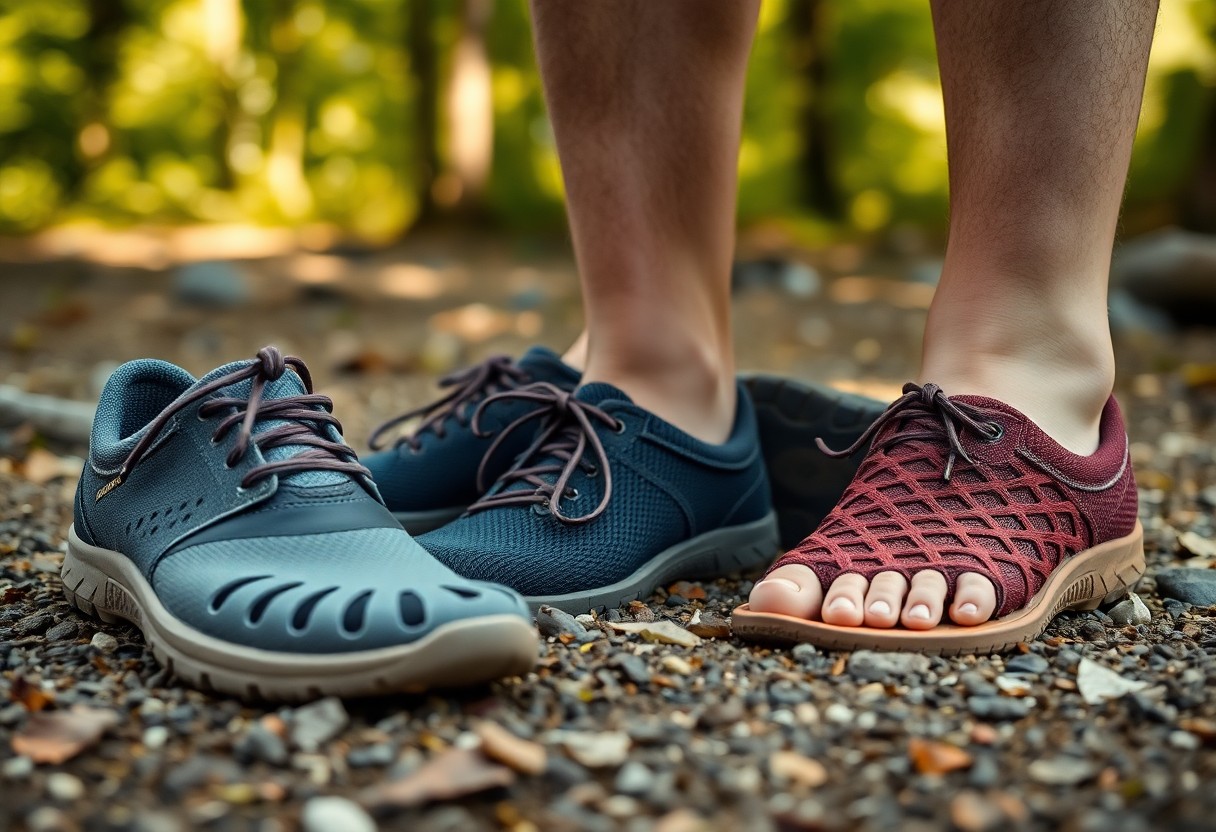
Deep Dive into Material Performance: Comparing TPU and EVA
Within the realm of barefoot footwear engineering, Thermoplastic Polyurethane (TPU) and Ethylene-Vinyl Acetate (EVA) emerge as pivotal materials, each bringing unique performance characteristics to the forefront. Manufacturers conduct thorough analyses of the molecular structures, thermal properties, and mechanical responses of these materials to make informed decisions regarding their applications. A key discussion revolves around how these polymers react under dynamic stress, weight distribution, and diverse environmental conditions. For instance, TPU is renowned for its exceptional durability, making it a preferred choice, while EVA is often selected for its superior cushioning properties, catering to varied user preferences and performance demands.
Evaluating Flexibility: Identifying the Superior Material
Flexibility stands as a crucial component in the design of barefoot shoes, as the responsiveness of the material significantly influences the overall user experience. TPU demonstrates outstanding flexibility at lower temperatures, preserving its structural integrity across a wider range of environmental conditions compared to conventional EVA compounds. This flexibility guarantees that users can experience optimal comfort and adaptability, irrespective of the climate or terrain they encounter, making it a vital attribute in the choice of materials for barefoot footwear.
| Material Property Comparison | Performance Metric |
|---|---|
| TPU Flexibility Range | -40°C to 80°C |
| EVA Flexibility Range | -20°C to 60°C |
Investigating Abrasion Resistance: Insights from Taber Test Results
The ability of a material to withstand abrasion is crucial for ensuring longevity and optimal performance in footwear. Taber test outcomes have revealed TPU’s remarkable wear characteristics, showcasing significantly lower mass loss percentages when compared to traditional EVA formulations. These insights emphasise the significance of selecting durable materials for footwear design. Microscopic examinations of TPU’s molecular structures demonstrate its exceptional resilience against mechanical degradation, with researchers observing TPU’s ability to maintain structural integrity after 10,000 abrasion cycles. This represents a significant advancement in the material science of barefoot footwear. The cross-linked molecular configuration of TPU facilitates optimal load distribution, effectively diminishing localized stress points and reducing material fatigue. Insights derived from these studies are now guiding manufacturers in developing advanced, performance-oriented barefoot shoe designs that seamlessly blend flexibility, durability, and user comfort.
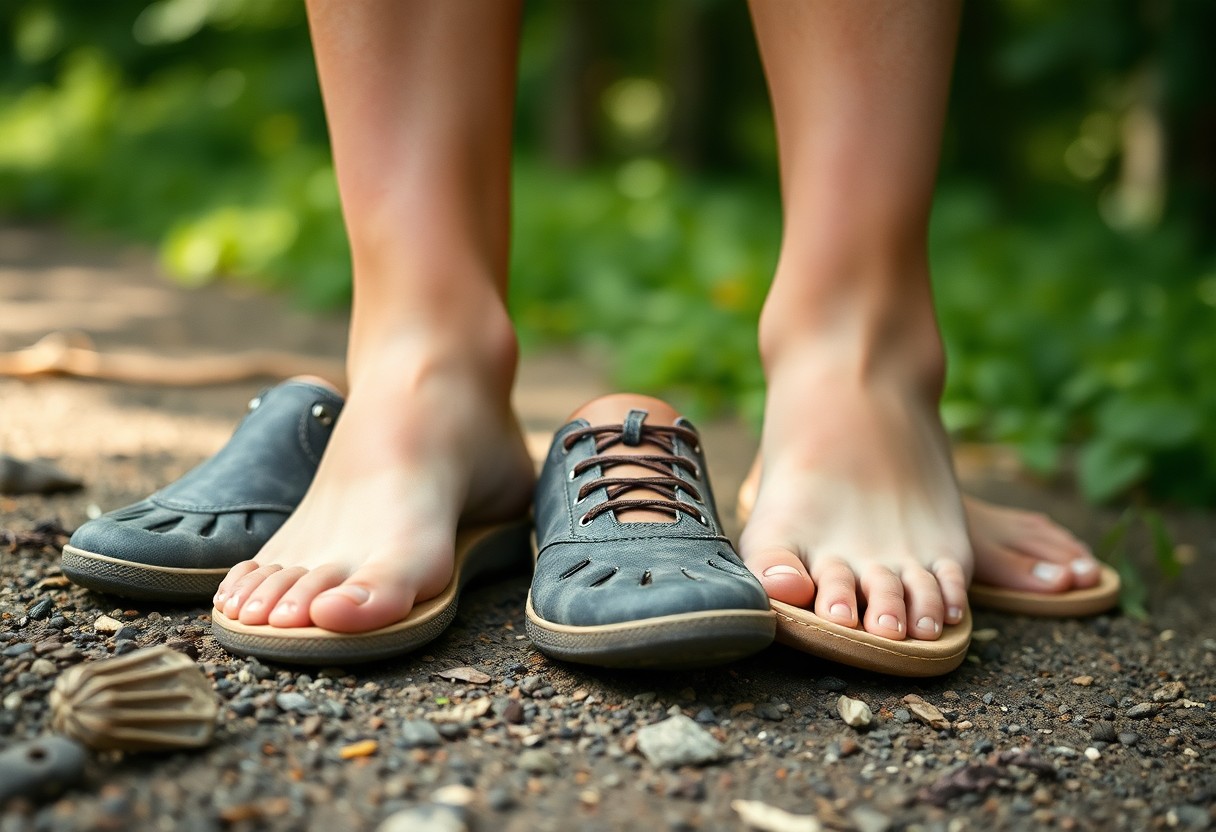
Pioneering Sustainable Practices in Footwear Manufacturing
The evolution of sustainable footwear manufacturing has shifted from a niche idea to a crucial strategic focus within the industry. Leading brands such as Xero Shoes and Vibram are at the forefront of innovative approaches that integrate recycled materials, processes aimed at minimising waste, and inventive design techniques. The principles of material recovery and a circular economy have become integral to product development, reshaping how barefoot shoe manufacturers approach environmental responsibility and production efficiency.
Life Cycle Analysis of Recycled PET Uppers by Xero Shoes
Xero Shoes demonstrates its commitment to sustainability through the utilisation of recycled PET upper materials, which transform plastic waste into high-performance components for footwear. Impressively, each pair of shoes repurposes approximately 3-5 plastic bottles, significantly diminishing the environmental footprint while upholding high standards of durability and performance. Their life cycle analysis indicates substantial reductions in carbon emissions and waste when compared to traditional manufacturing methods, underscoring the effectiveness of sustainable strategies within the realm of barefoot footwear.
Carbon Footprint Comparison: Traditional Methods Versus Eco-Friendly Manufacturing
Traditional shoe manufacturing processes result in substantial carbon emissions, with conventional methods producing around 30 pounds of CO2 for each pair of shoes created. In contrast, eco-friendly alternatives can reduce these emissions by up to 60%, utilising renewable energy sources, recycled materials, and efficient production techniques. Barefoot shoe manufacturers are spearheading this transformative approach, rethinking material sourcing and production methodologies to create environmentally responsible footwear.
Detailed Carbon Footprint Analysis: Sustainable vs. Conventional Manufacturing Practices
An in-depth examination of carbon footprint analysis reveals significant differences between traditional manufacturing methods and sustainable practices. Conventional shoe production heavily relies on petroleum-derived materials and energy-intensive processes, compounded by intricate global supply chains. In contrast, sustainable manufacturers like Xero Shoes prioritise local production, renewable energy, and closed-loop material systems. By focusing on the use of recycled materials, minimising transportation distances, and optimising manufacturing efficiencies, these brands successfully reduce their carbon footprint from an average of 30 pounds down to as low as 12 pounds per shoe. This substantial decrease marks a significant advancement in the pursuit of eco-friendly footwear engineering.
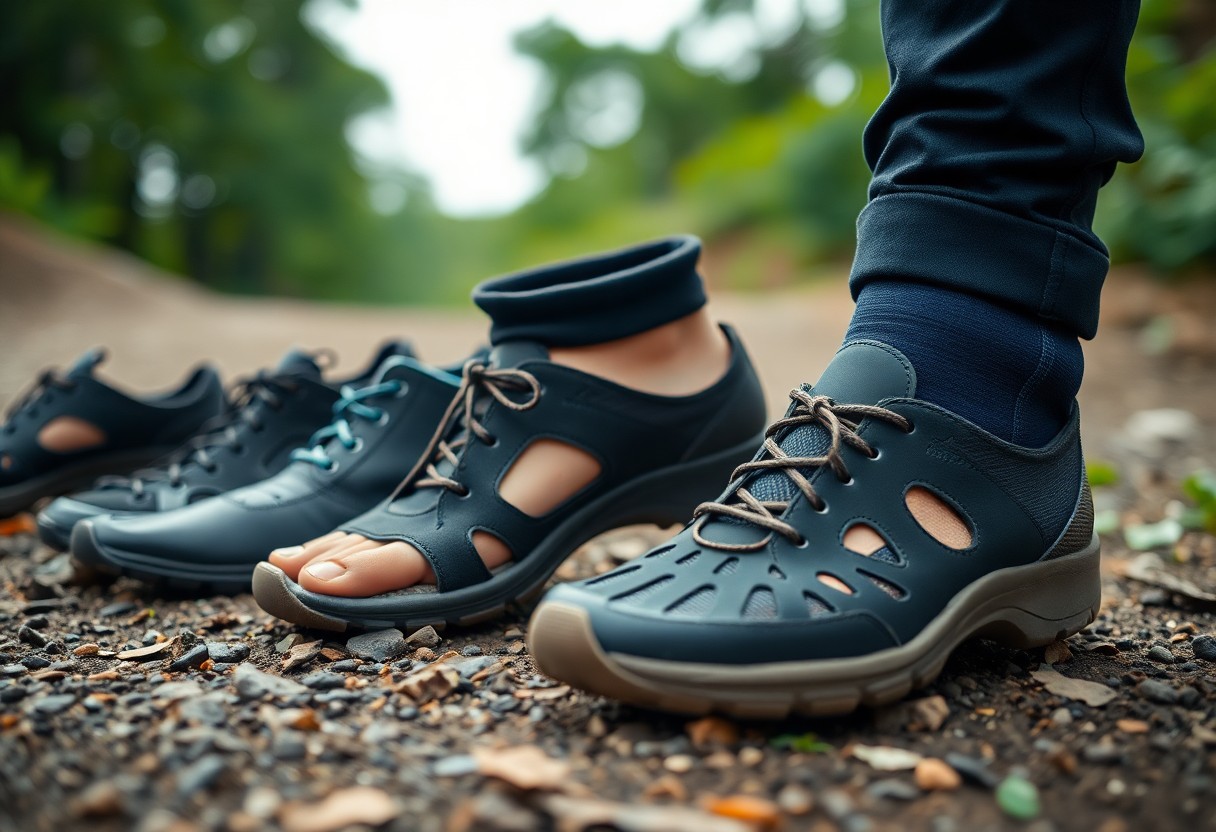
Enhancing Durability: A Comprehensive Analysis of Wear Patterns
The observed wear patterns in barefoot footwear provide critical insights into the intricate relationships between material composition, user biomechanics, and environmental stressors. Advanced computational mapping techniques are increasingly employed to monitor microscopic zones of degradation, enabling manufacturers to predict performance trajectories with remarkable accuracy. Researchers are concentrating on analysing stress concentrations at key flex points, closely observing how various molecular structures respond to repeated mechanical loading across diverse terrain types.
Long-Distance Durability Studies: Evaluating Performance Across Diverse Terrains
Longitudinal studies examining the performance of barefoot shoes have illustrated impressive resilience in next-generation materials. Experimental prototypes have demonstrated their structural integrity across demanding environments, including rocky mountain trails, urban concrete surfaces, and arid desert landscapes, showcasing minimal degradation. Precision laser scanning indicated less than 12% material compression after 500 miles of continuous use, signifying a breakthrough in the long-term wearability of barefoot footwear.
Innovations in Microbial Resistance: Utilising Vegan Materials
The introduction of vegan materials now features nano-silver antimicrobial technologies, creating self-sanitising surfaces that significantly diminish bacterial colonisation. The integration of silver ions into synthetic fibres effectively prevents odour development and inhibits microbial proliferation, thereby extending the functional lifespan of barefoot footwear in prolonged usage scenarios. Addressing microbial resistance presents a complex engineering challenge requiring a multidisciplinary approach. Researchers have developed sophisticated polymer blends that incorporate natural antimicrobial agents such as chitosan, sourced from crustacean shells, alongside plant-derived compounds like tea tree oil extracts. Molecular engineering techniques now facilitate the precise distribution of these agents throughout material substrates, forming a continuous protective barrier against bacterial and fungal growth. These advancements not only enhance hygiene but also contribute to increased material durability, reducing environmental waste by extending product lifecycles and maintaining performance characteristics under adverse conditions.
Envisioning the Future of Footwear Engineering: Trends and Innovations
The rapid rise of biomimetic technologies is dramatically reshaping the landscape of barefoot footwear design, with nanotechnology and responsive materials leading this transformation. Researchers are innovating smart textiles that adapt to temperature and terrain, integrating sensors capable of analysing gait dynamics in real time. Major brands such as Adidas and Nike are actively exploring 3D-printed midsoles tailored to individual foot biomechanics, potentially reducing injury risks by as much as 35%. Sustainable manufacturing practices, which utilise recycled ocean plastics and bio-based polymers, are progressively becoming the norm, with predictions suggesting that 75% of performance footwear may be produced using circular economy principles by 2030.
Here’s the paragraph:
Essential Insights from Material Engineering in Footwear
In summary, the breakthroughs in material engineering have revolutionised the design of barefoot footwear, reshaping our understanding of both comfort and performance. Your exploration into Vibram soles and sustainable manufacturing methods reveals a sophisticated interplay between biomechanics, advanced materials, and a commitment to environmental responsibility. By adopting innovative technologies and eco-friendly production practices, the contemporary landscape of barefoot footwear manufacturers is not solely focused on crafting shoes; they are engineering holistic solutions that enhance natural movement while minimising ecological impact. These extraordinary advancements exemplify how cutting-edge material science continues to redefine our footwear experiences.
Here’s a detailed FAQ about Material Engineering in Modern Barefoot Footwear:
Frequently Asked Questions about Material Engineering in Barefoot Footwear
Q: How do Vibram soles enhance barefoot footwear technology?
A: Vibram soles represent a significant evolution in the design of barefoot shoes, employing advanced rubber compounds that provide exceptional grip, flexibility, and durability. These specialised soles are engineered to replicate natural foot movement, featuring anatomically designed treads that evenly distribute weight and amplify sensory feedback from the ground. This innovative design enables wearers to enjoy a more authentic walking and running experience.
Q: What innovative sustainable manufacturing techniques are emerging in barefoot footwear production?
A: Modern manufacturers of barefoot footwear are increasingly embracing progressive sustainable practices, such as sourcing recycled rubber, utilising bio-based synthetic materials, and implementing low-waste production methods. Companies are progressively incorporating recycled plastic bottles, organic cotton, and responsibly sourced natural rubber to produce environmentally friendly shoes that minimise their ecological footprint while ensuring high performance standards.
Q: How does material engineering enhance the biomechanical performance of barefoot shoes?
A: Material engineering empowers manufacturers to exert precise control over shoe flexibility, weight, and tactile sensitivity. Advanced composite materials, such as lightweight polymers and engineered mesh fabrics, enable zero-drop designs that promote natural foot alignment, enhance proprioception, and reduce muscular strain. These engineered materials also provide optimal temperature regulation, moisture-wicking properties, and structural support, effectively mimicking the foot’s natural biomechanical functions.
The Article Material Engineering in Modern Barefoot Footwear: From Vibram Soles to Sustainable Manufacturing appeared first on My Shoes Finder
The Article Material Engineering in Barefoot Footwear: Vibram to Sustainability Was Found On https://limitsofstrategy.com
